When first owning a goldfish, it can be confusing to figure out how much to feed them. You may find that they gobble down food in seconds and look at you through the tank as if asking for more.
Maybe they rush to the front of the tank begging for food as if they’ve never eaten before in their lives. But do not let this fool you!
Fish anatomy is very different from our human body, and so their digestive systems are completely different.
Different fish have different digestive workings, but goldfish lack an acidic stomach like we have, instead, they digest and absorb nutrients solely through their intestines.
The bacteria in their gut does all the work, and so their bodies do not have a system like ours, which tells them they are “full” and many fish species can and will “eat themselves to death!”
Many fish also live in an environment where food is scarce, and they may not eat for days or even months on end, so they make the most of food when they see it, as in their mind, it might be the last time they eat for a long while.
- From this, how can I know how much to feed my goldfish?
- How often do I need to feed them?
- How much is too much?
- How do I know if I’m underfeeding my goldfish?
We aim to answer these questions below:
Do goldfish eat a lot?
All fish are cold blooded animals – this means that their body temperature is based on their surroundings. As an extension of this, the temperature they live at directly influences the metabolism of the fish.
In warmer temperatures, fish will have a faster metabolism and be able to expend more energy. In cooler temperatures, fish will have a slow metabolism and will not expend as much energy.
This means that in warmer temperatures, your goldfish will eat more than they would in cold temperatures. They will also burn off more weight in warmer temperatures and will be much hungrier.
As it stands, goldfish generally eat a good amount as far as fish go, but when compared to how much a human or mammal might eat, it is a tiny amount.
Goldfish eat lots because they are active fish and so burn lots of energy; they also get quite large and have a more herbivorous diet, meaning they need to consume more algae and plant matter to get their energy.
In the typical aquarium, we usually say a small pinch of food, but this is again, dependant on temperature, size of the tank, amount of fish, size of fis, and so on. But for a general aquarium housing multiple fish, a small pinch, or one eighth of a teaspoon, 4 times a week, is ideal.
For big ponds with mature goldfish, usually give a pinch or palmful of flakes, pellets or sticks, once every two days.
Will my goldfish eat everything I give them?
Goldfish have very broad diets, and so they will eat a lot of different types of foods – this doesn’t mean they will eat everything however, and you should be responsible in what you choose to feed your goldfish.
Goldfish explore the world with their mouths, and much like a child, will attempt to eat things they aren’t supposed to, so be careful when offering them things which could potentially get stuck in their throats (yes goldfish can choke to death), could injure them or that are indigestible.
Goldfish will eat most fruit and veg, fish, meat, egg and tiny animals like insects, spiders and worms.
While goldfish can eat all these things, not all of them are a great food source as they can fowl the water quickly if left uneaten, aren’t always healthy for goldfish and can carry disease or parasites.
Foods that are good for goldfish
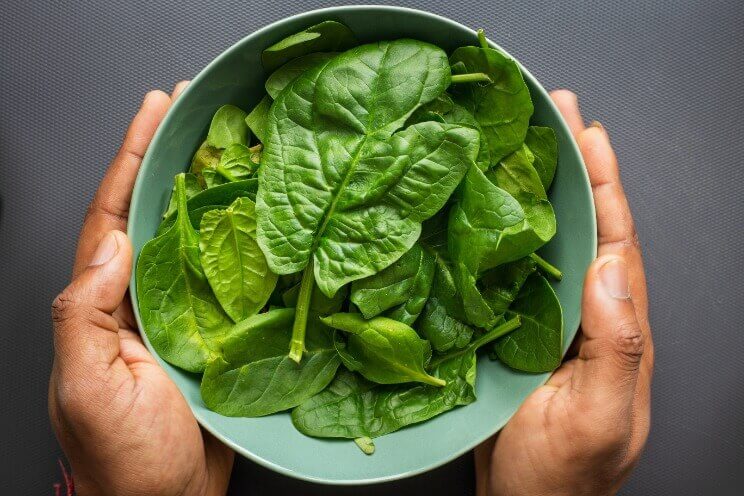
✅Green beans (from a can): This is one of the best foods you can give to goldfish. It is natural, easy to digest and is an excellent source of nutrients for your fish; they are cheap and easily available, and don’t foul the water much. They are a highly recommended food for any fishkeeper.
✅Frozen or sugar snap peas: These are a great food for goldfish, they even help with digestion and bowel movement. Simply boil the peas until they become soft, cool them down and offer them to your fish.
✅Spinach: This is another great food when boiled, along with cucumber.
✅Algae: Most types of algae are also eaten with gusto by goldfish, especially the softer types of green hair algae, which is a food they would eat if they were wild.
✅Hard boiled egg: This is a good food, although be careful as it is a strong pollutant, you may want to do a water change after feeding it.
✅Broccoli: This is a great food, along with orange peel and lettuce.
✅Dried mealworms, salmon, muscle, prawn and crab: These are all superb sources of protein to give to goldfish.
Feeding these types of foods is not only good for their nutrition, but also provides them with enrichment, as they can spend hours at a time picking away at these foods – it keeps their mind focused and stops them from picking on each other too!
Foods to not give to goldfish
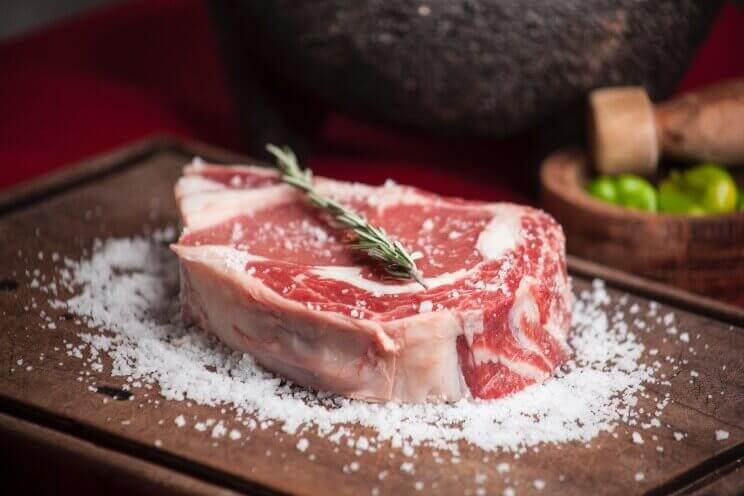
❌Wild insects: While it is in a fish’s nature to eat bugs, catching wild insects that are potentially poisonous and carry harmful bacteria and parasites and feeding them to your pet is very irresponsible.
If you wish to feed your fish insects, do so by purchasing captive bred “live foods” from your local pet store; they are free from parasites and disease and are safe to feed, although for goldfish, while large fish can eat insects, we don’t really recommend it.
❌Land based meats: As fish are aquatic animals, their digestive systems aren’t as accustomed to eating land animals as you or I. Meats like pork, chicken and beef are not good foods for goldfish as they contain amino acids which goldfish cannot break down, and that build up in their bodies.
While meat can be fed very sparingly, it is not good long term, as the amino acids build up, causing things like fatty liver disease, dropsy, internal infections, gout and a host of other horrible health conditions you don’t want for your goldfish.
It is better to not feed your goldfish land based meat at all, as their diets are more on the plant based side anyway.
❌Bread, grains and seeds: These are also bad foods for goldfish as they are not evolved to eat seeds, and all they will do is clog up their intestinal tract, causing colic and potentially killing your fish.
What do goldfish eat in the wild?
Wild goldfish don’t really exist, as they are a man made animal, however, stray goldfish that have been irresponsibly released into the wild do exist and their diets are nearly the exact same to those of many of the world’s other carp species.
They feed on mainly algaes, aquatic plants and small insects and invertebrates.
All fish are omnivores, but they fit within categories. Some fish are more on the predatory side, and have a diet mainly focused on high protein, meaty foods like invertebrates, other fish, amphibians and carrion. Some species even eat reptiles, mammals and birds!
These predatory fish include things like:
- Piranha
- Arapaima
- Catfishes
- Some cichlids
- Most loaches
… and a few others.
On the other side, you have fish which hang more on the herbivorous side, and have a more plant and fibre based diet. These fish feed mostly on algae, as well as any other plant matter that falls into their environment, aquatic plants, leaves, veg and fruit.
Fish with a more plant based diet are:
- Nearly all of the Carp family
- Koi
- Goldfish
- Most of the Barb family
- Mbuna cichlids
- Small Plecostomus species
- Hillstream
- Borneo Loach
- Garras
… and a few more.
In essence, the structure of predator and prey is pretty loose when applied to fish, as predatory fish still need a deal of plant matter in their diet, and herbivorous fish can and will eat other animals given the chance if they will fit in their mouths, and need protein.
But, the best diet for goldfish is one that is around 70% plant matter and 30% high protein foods like small invertebrates, bloodworms and daphnia.
How much should you feed goldfish?
As mentioned, it can be difficult to pinpoint exactly how much to feed your fish depending on your situation, but there are some things you should know that may help you to better understand how much to feed your tank or pond.
Temperature
This decides the metabolic rate of the fish and its rate of food consumption. If you have your goldfish in a warm tank, that is 20C / 68 F or above, your goldfish will want to eat more.
Although we don’t recommend it, if you keep your goldfish at 26 C / 78 F, then you should feed them every day, sometimes even twice a day as long as your filter can handle it.
You will find that at these temperatures, your goldfish burn off weight really fast, they will also be more energetic, will grow much faster and will have shorter lifespans as a result.
Goldfish that live below 20 C / 68 F will not need to eat as much, and the lower the temperature goes, they will eat less and less, expend less energy, grow more slowly, and will live significantly longer lives.
Once the temperature reaches below 10 C / 50 F, the bacteria within the fish’s gut slows down, and can no longer break down high amounts of protein – this is why, in a pond, we switch to wheat germ during the autumn and early spring.
We should also feed less than we do in warmer months during this time, as it takes a lot longer for the food to be processed through the gut. If you feed lots during this time, blockage can build within the intestines and this causes bloat and dropsy.
Below 5 C / 41 F, the gut bacteria stops completely and the goldfish will enter a torpid state. Do not feed your fish at all during this time! Don’t worry, they expend almost no energy during this time and lose weight at an extremely slow rate.
| Temperature | Feed |
|---|---|
| 26 C / 78 F | Around 2 times per day |
| 20C / 68 F or Above | Around 1 – 2 times per day |
| Below 20 C / 68 F | Around 1 time per day |
| Below 10 C / 50 F | Switch to wheat germ |
| Below 5 C / 41 F | Do not feed |
Amount of goldfish
Everyone will have a different amount of fish – we always recommend you keep goldfish in groups as they are highly social fish, so some individuals may have many fish.
A good technique is to first check over all your fish. Look at their bellies, if you notice some look sunken in, that means they aren’t getting enough food and you perhaps aren’t giving enough food to get around to them all.
If this is the case, feed small amounts over a longer time, keep giving little bits of food over the course of about 5 minutes. If any food is left behind, stop feeding.
This should ensure a fair chance that all your fish get at least some food.
Size of the tank
Remember that when you feed, you are adding biological waste to the tank, and your filter can only handle so much before the ammonia skyrockets and crashes the tank.
It is important to know your limitations – this is one of the reasons we recommend large tanks for goldfish as a small tank won’t be able to handle the bioload necessary to feed a goldfish.
If you do have a smaller tank, you should feed less, maybe only feed 3 times a week or once every other day, to allow the beneficial bacteria to keep on top of the waste.
Size and age of goldfish
The age of the goldfish is also a factor in how much to feed, as a young growing goldfish will eat a lot more than an adult which expends less energy and nutrients.
Goldfish fry will need feeding 3 times a day.
Since they are so small, they haven’t the fat reserves to survive without food for a number of hours. This is why it’s important to do lots of water changes when you have fry.
While larger goldfish will eat less, they need larger foods like pellets and vegetables, as opposed to tiny crumbles of fish flakes.
How to tell if you are underfeeding goldfish
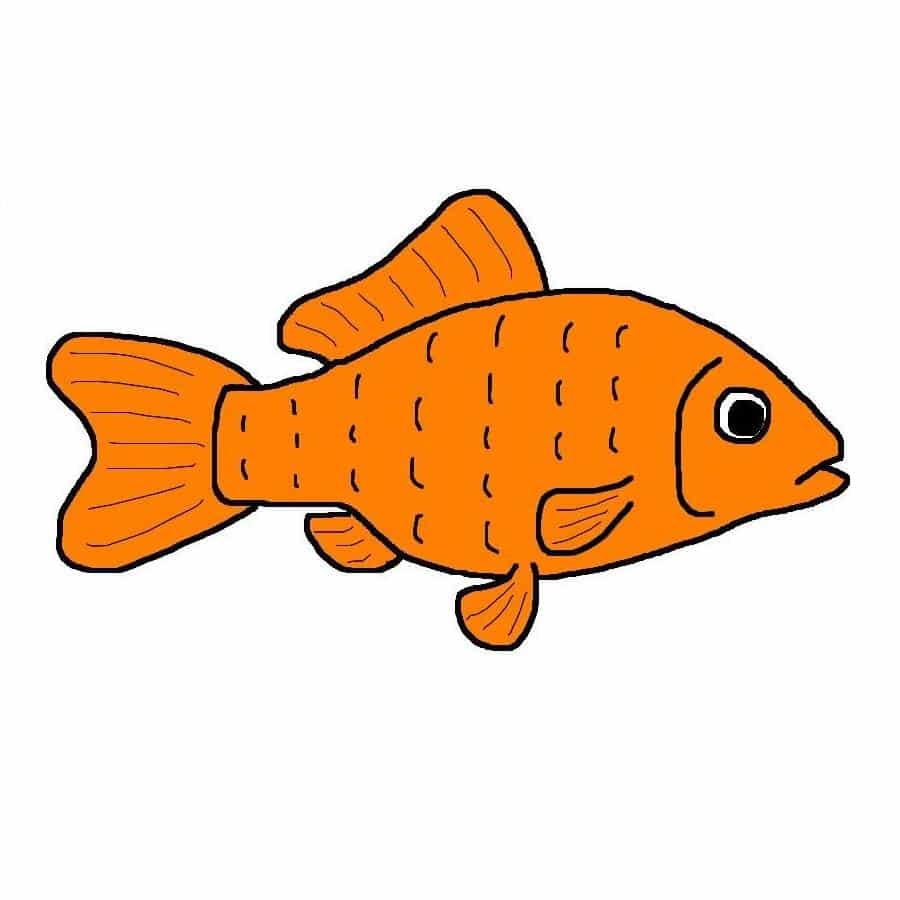
It is quite easy to tell if your goldfish are underfed – simply look at their bellies; if they are sunken in and have a concave arch shape to them which folds inward, they are underweight and need more food.
Fish should always have their bellies bow out slightly, but should still look streamlined. Their gills and head should be aligned with the rest of their body. If they have what seems like a big head or gills which protrude from their sides, they are again, underweight.
The peduncle, which is the space between the tail fin and body should also have some weight to it – it should be straight and have thickness to it; if it bows inwards on top and bottom, and looks very slim, your fish is underweight and you should increase the amount that you feed.
If you find your fish are underweight, you should also give them health checks. Look for any signs of lesions or parasites, it could be that they are harbouring internal and or external parasites which are sapping away nutrients, causing them to lose weight.
Although this isn’t very common in goldfish as they are a domestic animal, it does happen to a lot of people. You can easily deworm your fish with a chemical antibiotic treatment (just be careful when treating as meds that kill parasites will also kill snails and shrimp you may want in your tank).
Underweight Goldfish Checklist:
⬜ Sunken bellies
⬜ Big head or gills which protrude from their sides
⬜ Space between the tail fin and body bows inwards on top and bottom
If your goldfish has any of the above, they may be underweight.
How to tell if you are overfeeding goldfish
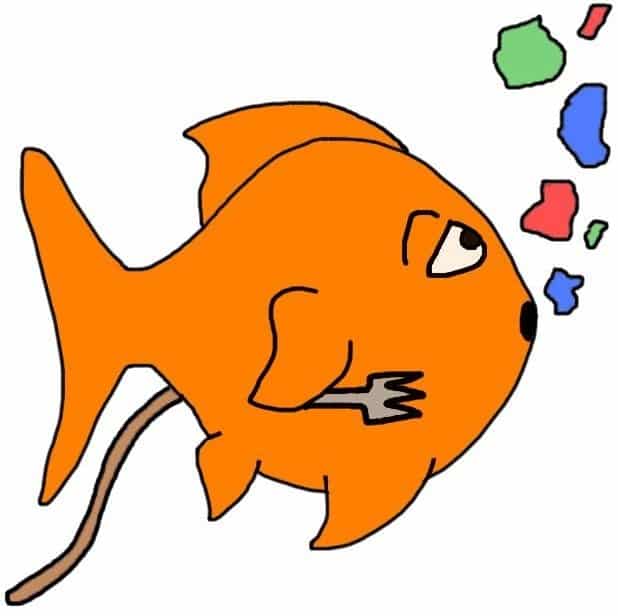
If you are overfeeding your goldfish, the first thing you will notice is their bellies are round and bow out. They will look fat, not only from underneath, but the sides will also bow out.
If your goldfish does this, you should fast them and reduce your feeding. Continuing feeding when a fish has a swollen belly will quickly lead to bloat, dropsy and eventually death.
Another thing you will notice is your water quality will foul quickly. If you notice a sudden spike in ammonia or nitrites, then it could be that you need to reduce your feeding schedule.
This is another reason why it’s important to test your water regularly, as you could be doing something harmful to the water chemistry without realising, such as overfeeding.
You will also be able to tell if you are overfeeding if there is food left behind – sometimes there is so much food that your goldfish will miss some and it will rot at the bottom of the tank.
If you don’t have a cleanup crew, like snails, then remove this uneaten food as soon as possible as it is a source of harmful ammonia.
Once you get a good schedule going and know how much to feed, deviate from it very little, as the stability of a good routine is key to the success of an aquarium.
Overweight Goldfish Checklist:
⬜ Round bellies and sides that bow out
⬜ Water that fouls quickly
⬜ Food left behind
If your goldfish or tank has any of the above, you may be overfeeding and they may be overweight.
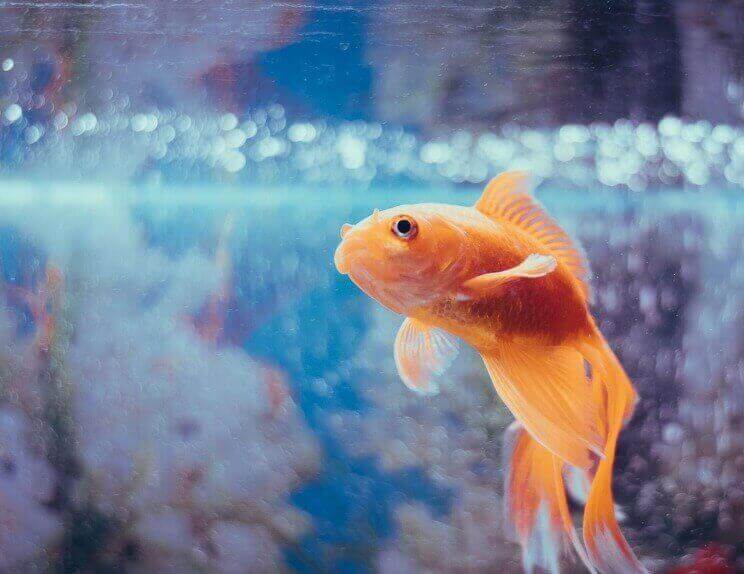
Very good covers everything. Best I’ve ever seen.
Do you do the same for pond goldfish and golden orfe